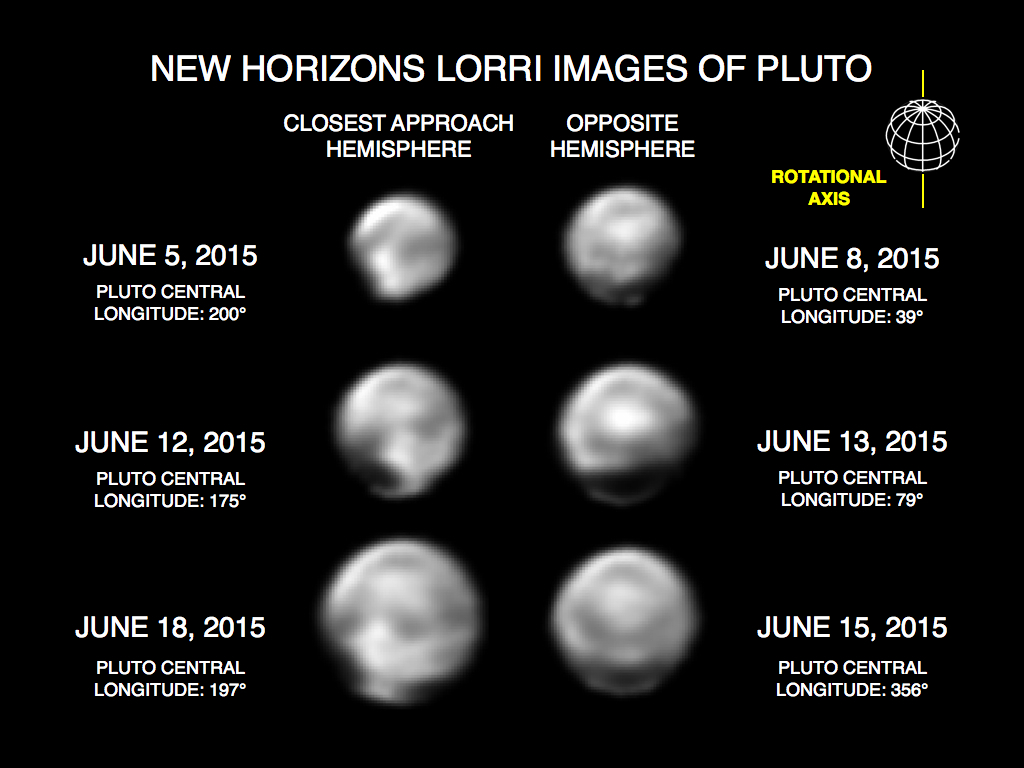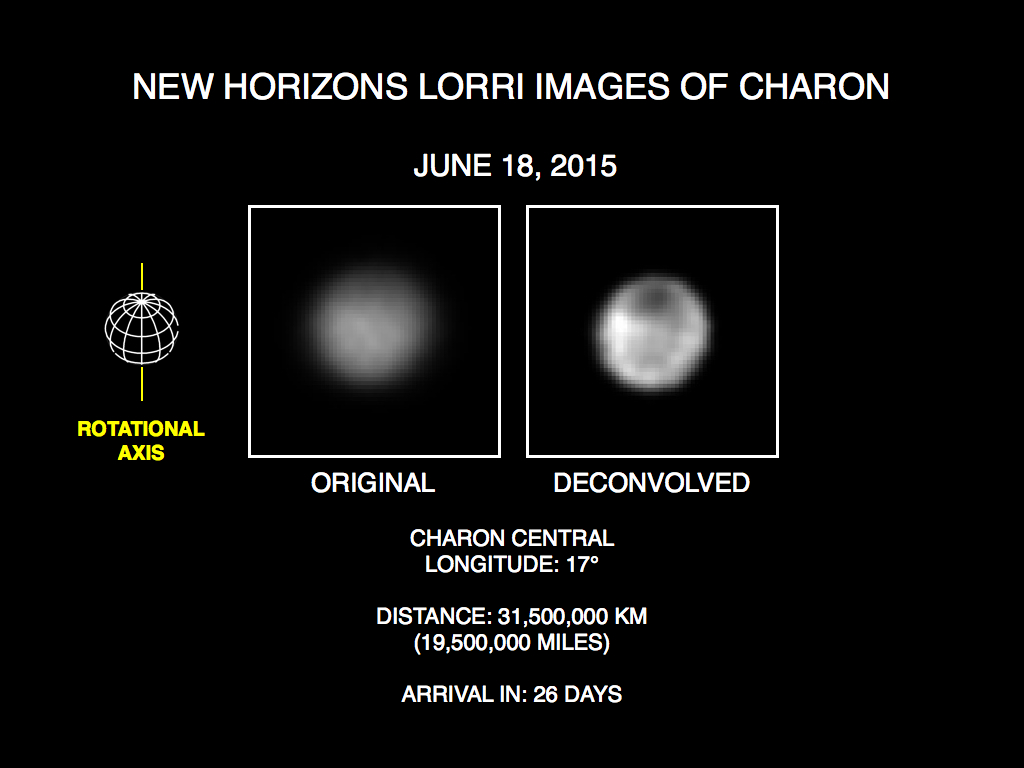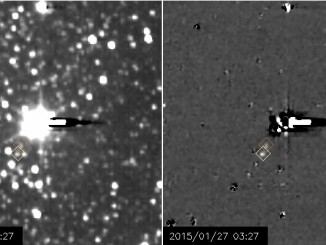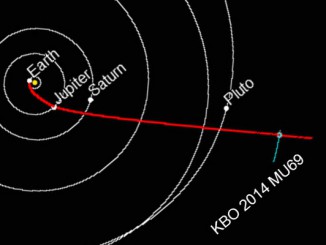
In a long series of images obtained by New Horizons’ telescopic Long Range Reconnaissance Imager (LORRI) between May 29 and June 19, Pluto and its largest moon, Charon, appear to more than double in size. From this rapidly improving imagery, scientists on the New Horizons team have found that the “close approach hemisphere” on Pluto that New Horizons will fly over has the greatest variety of terrain types seen on the planet so far. They have also discovered that Charon has a “dark pole” — a mysterious dark region that forms a kind of anti-polar cap.
“This system is just amazing,” said Alan Stern, New Horizons Principal Investigator, from the Southwest Research Institute, Boulder, Colorado. “The science team is just ecstatic with what we see on Pluto’s close approach hemisphere: Every terrain type we see on the planet — including both the brightest and darkest surface areas — are represented there, it’s a wonderland!
“And about Charon — wow — I don’t think anyone expected Charon to reveal a mystery like dark terrains at its pole,” he continued. “Who ordered that?”

“The unambiguous detection of bright and dark terrain units on both Pluto and Charon indicates a wide range of diverse landscapes across the pair,” said science team co-investigator and imaging lead Jeff Moore, of NASA Ames Research Center, Mountain View, California. “For example, the bright fringe we see on Pluto may represent frost deposited from an evaporating polar cap, which is now in summer sun.”
In a related press release, the first colour movies from New Horizons show the complex orbital dance of Pluto and Charon.

“It’s exciting to see Pluto and Charon in motion and in colour,” says Alan Stern. “Even at this low resolution, we can see that Pluto and Charon have different colours — Pluto is beige-orange, while Charon is grey. Exactly why they are so different is the subject of debate.”
As New Horizons closes in its intended target, the best is yet to come. “Colour observations are going to get much, much better, eventually resolving the surfaces of Charon and Pluto at scales of just kilometres,” said Cathy Olkin, New Horizons deputy project scientist from SwRI. “This will help us unravel the nature of their surfaces and the way volatiles transport around their surfaces. I can’t wait; it’s just a few weeks away!”
New Horizons is approximately 2.9 billion miles (4.7 billion kilometres) from Earth and just 16 million miles (25 million kilometres) from Pluto. The spacecraft and payload are in good health and operating normally.



